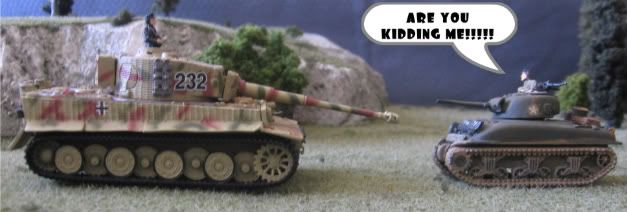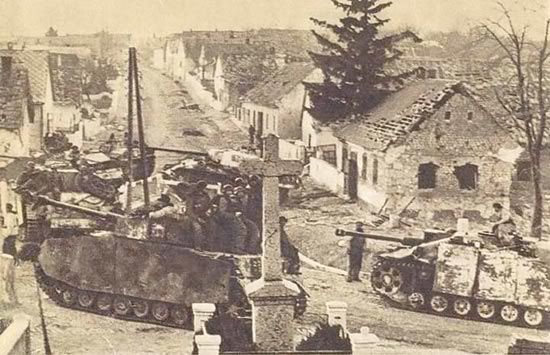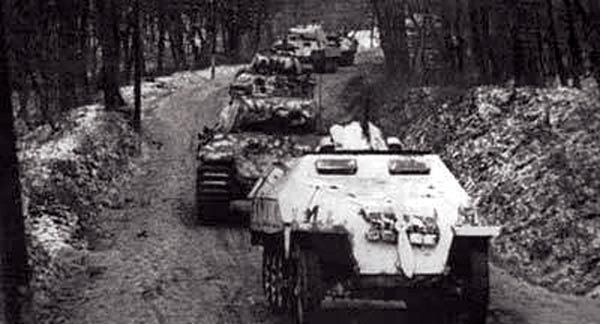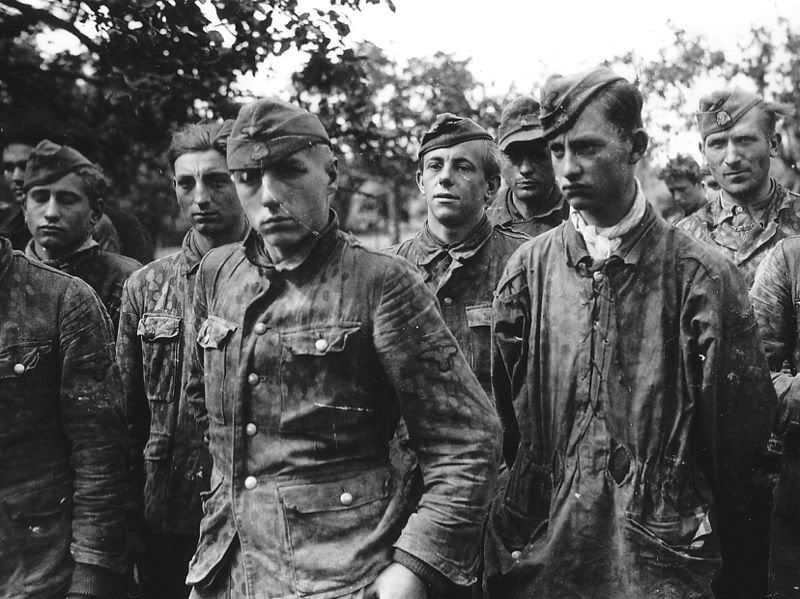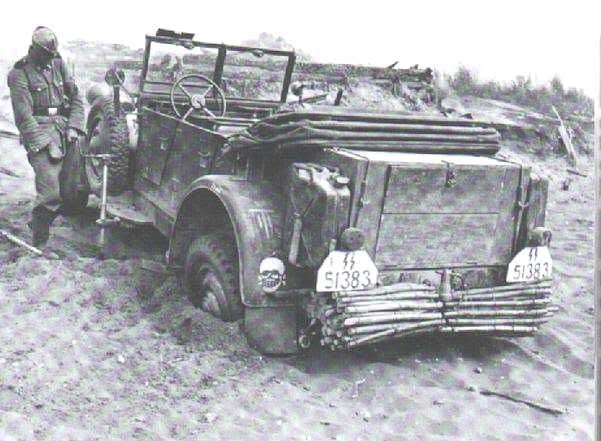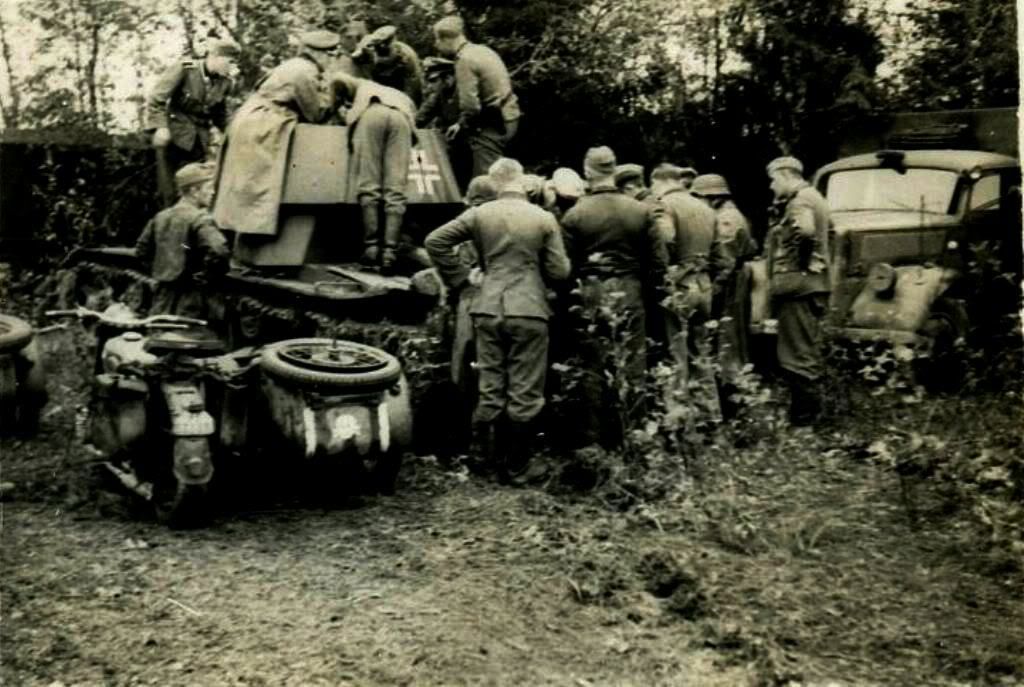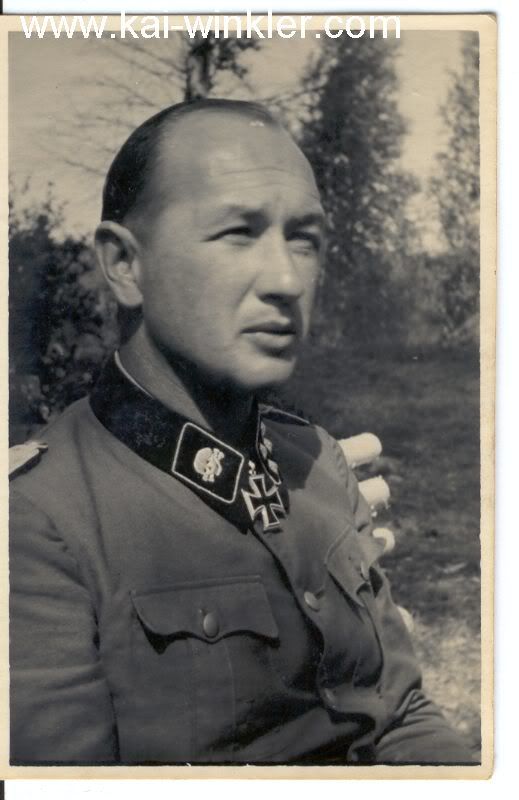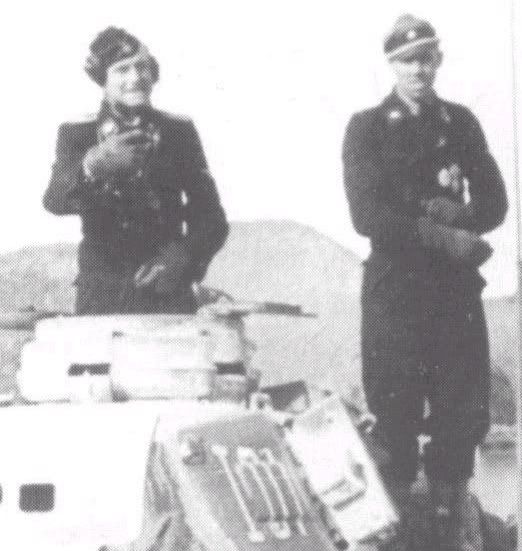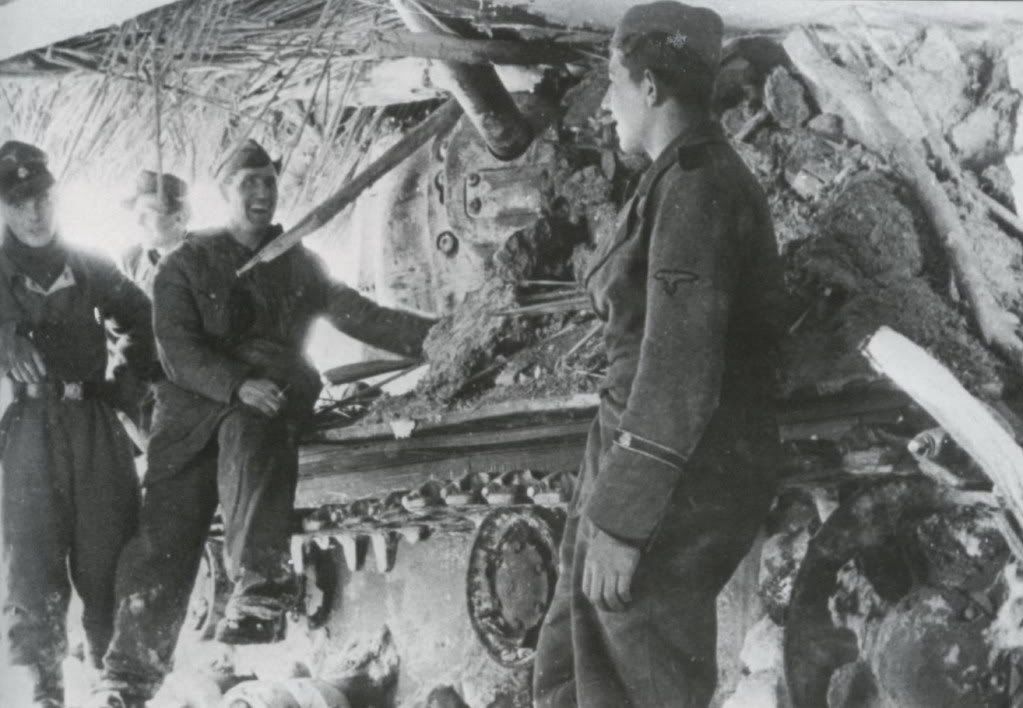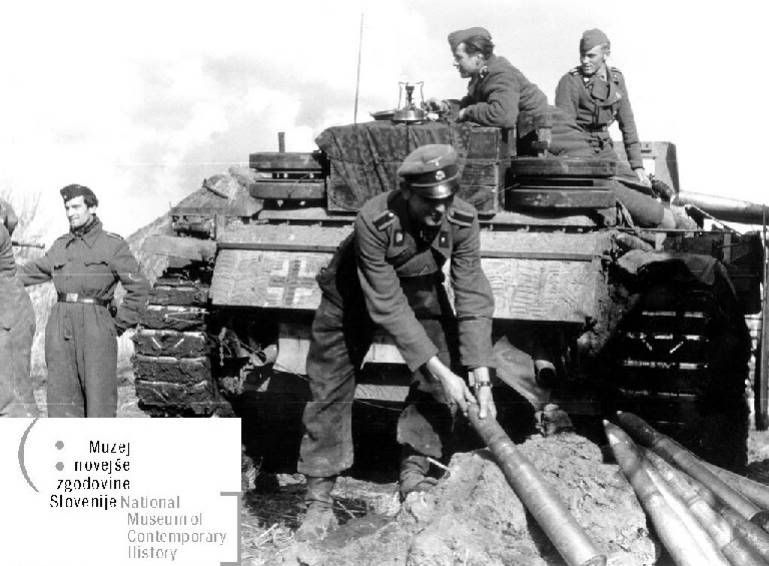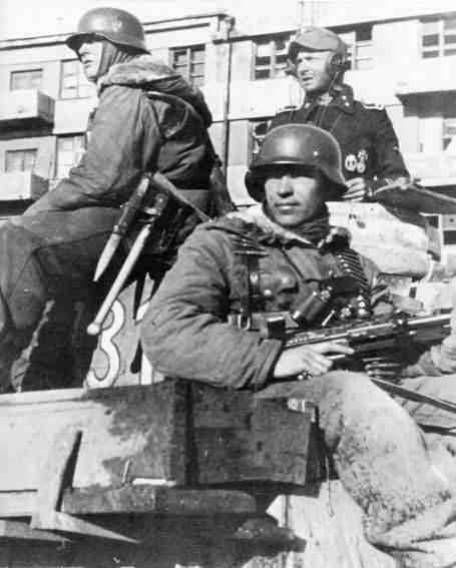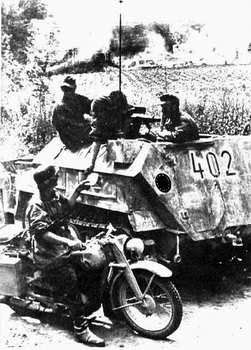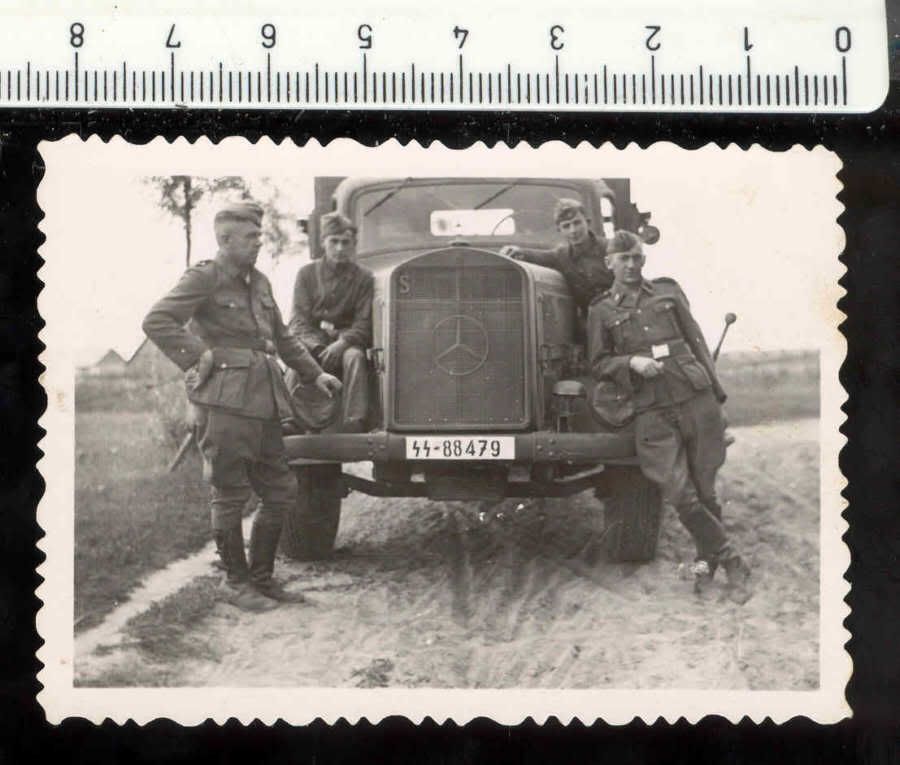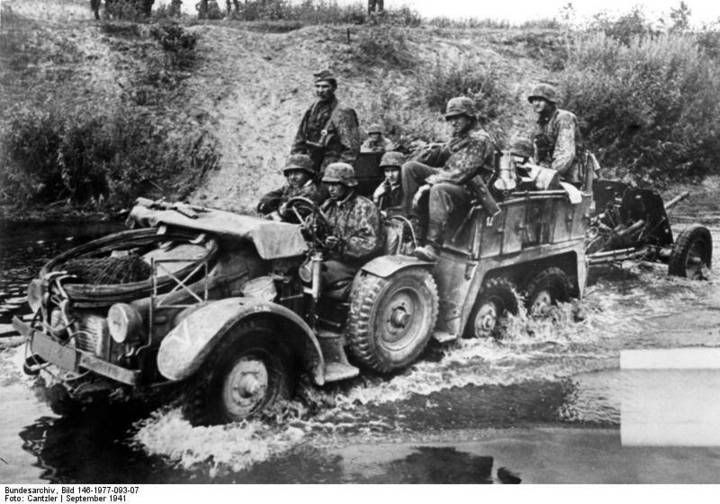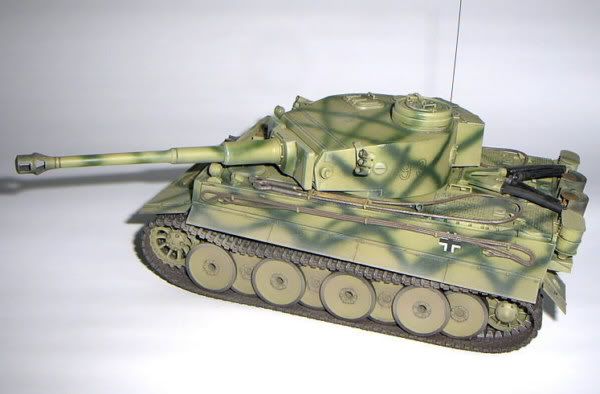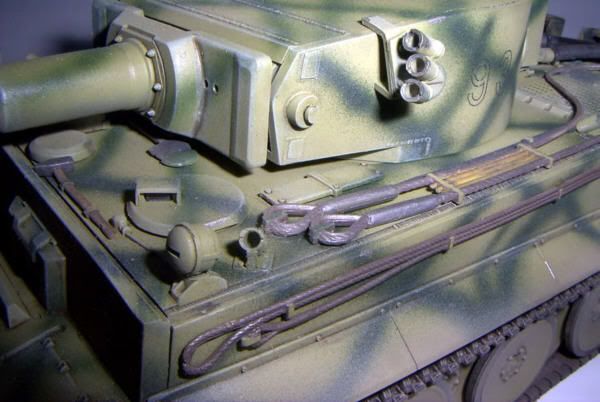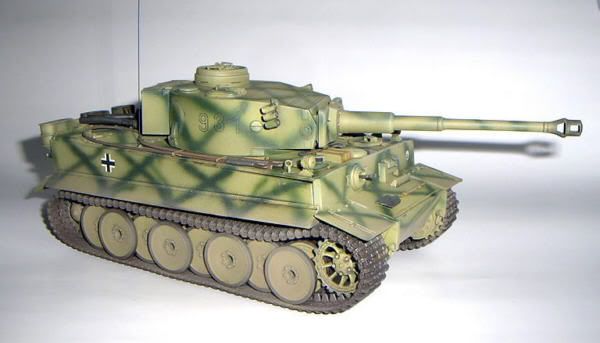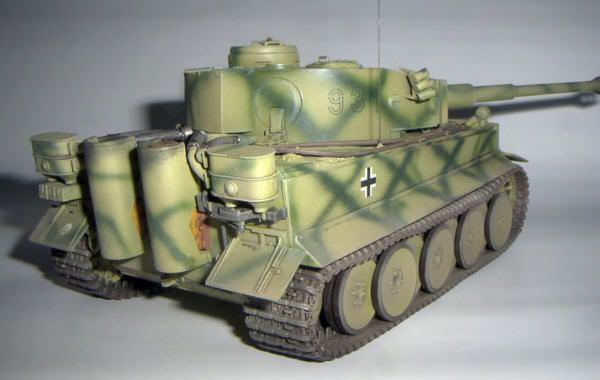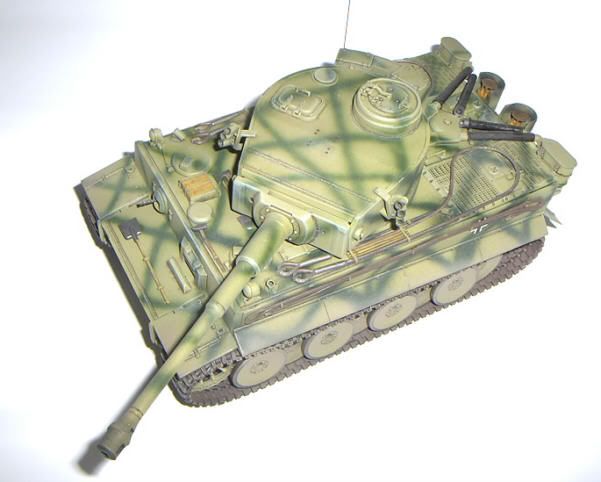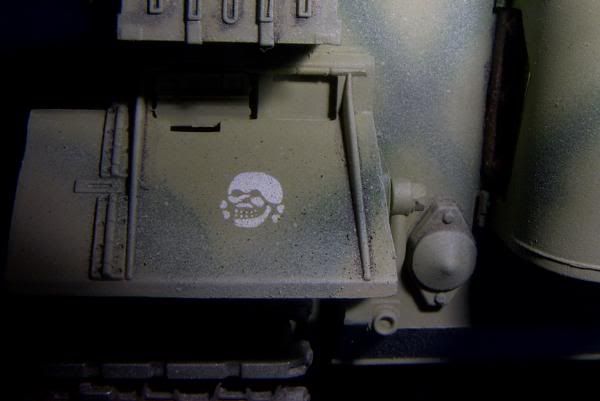Post by 60buick on Mar 24, 2009 21:17:33 GMT -5
It is so hard to find stuff in one place I am going to post what I find here for reference so everyone can use it. They are all 3rd SS Totenkopf.
I am doing all my German stuff as Totenkopf.
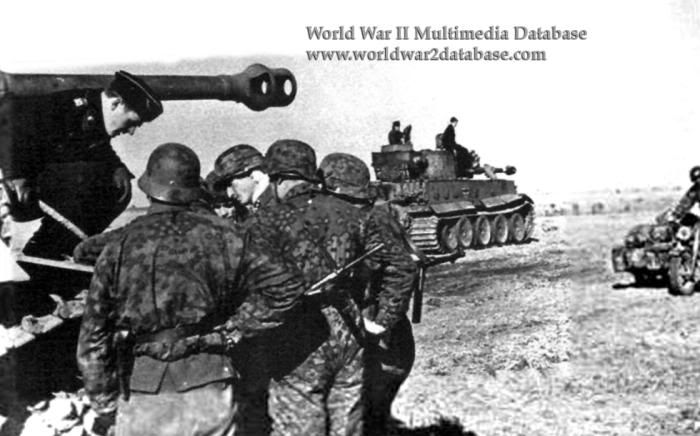
Panzerkampfwagen VI Tiger ausf E (SdKfz 181) Turmnummer (Turret Number) 313, 3.Kompanie, 1.Zug (Platoon) 3rd Vehicle, leads another Tiger of Schwere Panzer Abteilung (Heavy Tank Battalion) 503 that has stopped to confer with panzergrenadiers of 3rd SS-Panzergrenadierregiment "Eicke" of the 3rd SS Division "Totenkopf" (Death's Head) as they attack Chrustschtschewo-Nikitowka during the Battle of Belogrod on August 13-14, 1943. After the failure of Operation Zitadelle (Citadel) to take the city of Kursk in July 1943, substantially reduced German divisions withdrew to their previous positions around the town of Belogrod. Schwere Panzer Abteilung 503, over the commander's protests, was ordered to attach its three companies to three SS Panzergrenadier Divisions. This had the effect of blunting the Tiger force available and left the tanks without mutual armored support. Outnumbered ten to one, the Tigers, Panzers and Sturmgeschutz assault guns used their superior training and tactics, and the heavy armor of the Tigers, to assist "Totenkopf's" drive on the Merla River to link up with elements of the 4th Panzer Army. Despite forcing the Germans to withdraw from Belogrod on August 6, the heavy Soviet tank losses prevented the total destruction of the German forces. Between July 5 and August 7, 1943, Schwere Panzer Abteilung 503 claimed to have destroyed 385 tanks, 4 assault guns, and 265 antitank guns. On August 13 alone, Tiger 332 knocked out three T-34 medium tanks, two KV-1 medium tanks, one SU-122 assault gun and five antitank guns. The Battalion lost one tank and Leutnant Weinert was wounded.
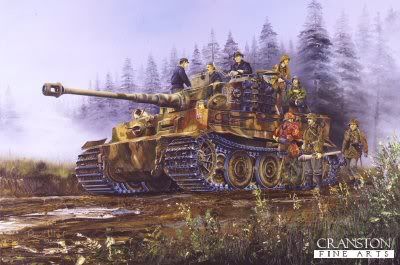
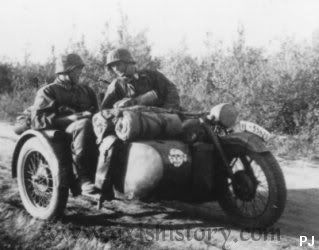

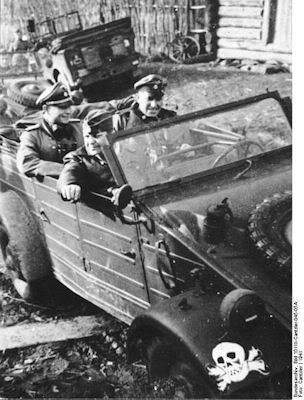


Crew of Panzerkampfwagen IV ausf H (SdKfz 161) of 3.SS Panzer-Division "Totenkopf" ("Death's Head") attached to the IV.SS-Panzerkorps at rest at a forest's edge. Note the Panzerschurzen (side armor) and the man accessing the side hatch of the turret. The Totenkopf was initially formed from concentration camp guards and men from the SS-Heimwehr Danzig ("Home resistance Danzig"). The division was officered by men from the SS-VerfŸgungstruppe (SS-VT), of whom many had seen action in Poland. From June 21, 1944, the division was commanded by BrigadefŸhrer Hellmuth Becker. In several furious battles near the town of Modlin in mid-August, the Totenkopf, fighting alongside the 5.SS-Panzer-Division Wiking and the 1.Fallschirm-Panzer-Division Hermann Gšring virtually annihilated the Soviet 3rd Tank Corps, which contained a division of communist Poles. The terrain around Modlin is excellent armour terrain, and Totenkopf's panzers exploited this to their advantage, engaging Soviet tanks from a range where the superiority of the German optics and the 75mm high-velocity guns gave them an edge against the T-34s. Later, IV.SS-Panzerkorps attempted to relieve the city of Budapest in December 1944 but were stymied by tough Russian resistance and poor coordination with other German units. By May 1945, they were within reach of the American forces, to whom the division officially surrendered on May 9. The Americans promptly handed Totenkopf back to the Soviets, and many Totenkopf soldiers died in Soviet Gulags.
I am doing all my German stuff as Totenkopf.

Panzerkampfwagen VI Tiger ausf E (SdKfz 181) Turmnummer (Turret Number) 313, 3.Kompanie, 1.Zug (Platoon) 3rd Vehicle, leads another Tiger of Schwere Panzer Abteilung (Heavy Tank Battalion) 503 that has stopped to confer with panzergrenadiers of 3rd SS-Panzergrenadierregiment "Eicke" of the 3rd SS Division "Totenkopf" (Death's Head) as they attack Chrustschtschewo-Nikitowka during the Battle of Belogrod on August 13-14, 1943. After the failure of Operation Zitadelle (Citadel) to take the city of Kursk in July 1943, substantially reduced German divisions withdrew to their previous positions around the town of Belogrod. Schwere Panzer Abteilung 503, over the commander's protests, was ordered to attach its three companies to three SS Panzergrenadier Divisions. This had the effect of blunting the Tiger force available and left the tanks without mutual armored support. Outnumbered ten to one, the Tigers, Panzers and Sturmgeschutz assault guns used their superior training and tactics, and the heavy armor of the Tigers, to assist "Totenkopf's" drive on the Merla River to link up with elements of the 4th Panzer Army. Despite forcing the Germans to withdraw from Belogrod on August 6, the heavy Soviet tank losses prevented the total destruction of the German forces. Between July 5 and August 7, 1943, Schwere Panzer Abteilung 503 claimed to have destroyed 385 tanks, 4 assault guns, and 265 antitank guns. On August 13 alone, Tiger 332 knocked out three T-34 medium tanks, two KV-1 medium tanks, one SU-122 assault gun and five antitank guns. The Battalion lost one tank and Leutnant Weinert was wounded.






Crew of Panzerkampfwagen IV ausf H (SdKfz 161) of 3.SS Panzer-Division "Totenkopf" ("Death's Head") attached to the IV.SS-Panzerkorps at rest at a forest's edge. Note the Panzerschurzen (side armor) and the man accessing the side hatch of the turret. The Totenkopf was initially formed from concentration camp guards and men from the SS-Heimwehr Danzig ("Home resistance Danzig"). The division was officered by men from the SS-VerfŸgungstruppe (SS-VT), of whom many had seen action in Poland. From June 21, 1944, the division was commanded by BrigadefŸhrer Hellmuth Becker. In several furious battles near the town of Modlin in mid-August, the Totenkopf, fighting alongside the 5.SS-Panzer-Division Wiking and the 1.Fallschirm-Panzer-Division Hermann Gšring virtually annihilated the Soviet 3rd Tank Corps, which contained a division of communist Poles. The terrain around Modlin is excellent armour terrain, and Totenkopf's panzers exploited this to their advantage, engaging Soviet tanks from a range where the superiority of the German optics and the 75mm high-velocity guns gave them an edge against the T-34s. Later, IV.SS-Panzerkorps attempted to relieve the city of Budapest in December 1944 but were stymied by tough Russian resistance and poor coordination with other German units. By May 1945, they were within reach of the American forces, to whom the division officially surrendered on May 9. The Americans promptly handed Totenkopf back to the Soviets, and many Totenkopf soldiers died in Soviet Gulags.


